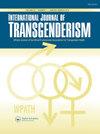Combined hysterectomy and mastectomy surgery for transgender patients in an integrated health care setting
Q1 Social Sciences
引用次数: 5
Abstract
ABSTRACT Background: Hysterectomy and mastectomy surgery for gender affirmation have traditionally been performed as separate surgeries. Our institution offers these surgeries as a single combined procedure, typically with same-day discharge. Decreasing the number of times patients need to have surgery may reduce barriers to care by limiting surgical and hospital stay events. Our primary objective was to describe the perioperative experience of transgender patients who underwent combined hysterectomy and mastectomy surgery. Methods: This retrospective case series assessed patients who underwent combined hysterectomy and mastectomy surgery between 2013 and 2015 in an integrated health care setting in the United States. Chart reviews were performed for outcomes of interest, which included operative and postoperative complications. Results: We identified 25 patients who underwent a combined hysterectomy and mastectomy for the indication of gender transition. Preoperative patient characteristics included a median age of 31, with a median BMI of 25. Ninety-two percent of the patients were on testosterone therapy at the time of surgery. A total of 76% and 24% of patients had laparoscopic and vaginal hysterectomies, respectively. Intraoperatively, the average blood loss was 104 mL, and there were no complications. Eighty percent of patients were discharged on the same day. Postoperatively, 92% of patients experienced no major complications. One patient received a uterine artery embolization and blood transfusion for postoperative intraabdominal bleeding, and one patient presented 9 weeks after surgery with partial vaginal cuff dehiscence requiring a cuff revision. There were no re-admissions within six months of surgery. There were no major mastectomy-related complications. Conclusions: Combined surgeries are feasible and reduce the number of surgical events and hospital stays. There were no complications that could be attributed to undergoing two procedures as a single incident.综合医疗机构中跨性别患者的子宫和乳房联合切除手术
背景:传统上,子宫切除术和乳房切除术是分开进行的。我们的机构提供这些手术作为一个单一的联合程序,通常在同一天出院。减少患者需要手术的次数可以通过限制手术和住院事件来减少护理障碍。我们的主要目的是描述接受子宫切除和乳房切除联合手术的变性患者的围手术期经历。方法:本回顾性病例系列评估了2013年至2015年在美国综合医疗机构接受子宫切除术和乳房切除术联合手术的患者。对结果进行图表回顾,包括手术和术后并发症。结果:我们确定了25例接受子宫和乳房联合切除术的患者,以确定性别转换的指征。术前患者特征包括中位年龄31岁,中位BMI为25。92%的患者在手术时接受了睾丸激素治疗。分别有76%和24%的患者行腹腔镜和阴道子宫切除术。术中平均出血量104 mL,无并发症发生。80%的患者在同一天出院。术后92%的患者无重大并发症。1例患者因术后腹内出血接受子宫动脉栓塞和输血,1例患者术后9周出现阴道部分袖带开裂,需要进行袖带翻修。手术后6个月内没有患者再次入院。没有重大的乳房切除术相关并发症。结论:联合手术是可行的,可减少手术次数和住院时间。没有并发症可归因于接受两个程序作为一个单一的事件。
本文章由计算机程序翻译,如有差异,请以英文原文为准。
求助全文
约1分钟内获得全文
求助全文
来源期刊

International Journal of Transgenderism
Social Sciences-Gender Studies
CiteScore
5.10
自引率
0.00%
发文量
0
期刊介绍:
International Journal of Transgenderism, together with its partner organization the World Professional Association for Transgender Health (WPATH), offers an international, multidisciplinary scholarly forum for publication in the field of transgender health in its broadest sense for academics, practitioners, policy makers, and the general population.
The journal welcomes contributions from a range of disciplines, such as:
Endocrinology
Surgery
Obstetrics and Gynaecology
Psychiatry
Psychology
Speech and language therapy
Sexual medicine
Sexology
Family therapy
Public health
Sociology
Counselling
Law
Medical ethics.
 求助内容:
求助内容: 应助结果提醒方式:
应助结果提醒方式:


